Table of Contents
ToggleThe Grand Bazaar of Urumqi, located in Xinjiang’s capital, is a vibrant landmark blending traditional Uyghur culture with modern commerce. It offers a memorable experience for shopping, cultural immersion, and exploring the area’s rich history. Here’s what you need to know about visiting in 2025.
What is the Grand Bazaar of Urumqi?
The Xinjiang International Grand Bazaar, also known as the Urumqi Grand Bazaar, is one of the largest and most popular bazaars in China. Located in the heart of Urumqi, this bustling marketplace spans over 10,000 square meters and attracts tourists from all over the world. It serves as both a commercial hub and a cultural centre, showcasing the region’s ethnic diversity, particularly the Uyghur community.
The Bazaar was built in 2003 to revive the region’s historical Silk Road trading legacy, and it has since become a symbol of Xinjiang’s rich cultural heritage. The site is a mix of ancient architectural styles and modern shopping facilities, providing a fascinating glimpse into the region’s history and commerce.

Why Visit the Grand Bazaar in 2025?
1. Cultural Immersion and Local Experience
Visiting the Grand Bazaar offers a unique opportunity to immerse yourself in the vibrant culture of Xinjiang. As you wander through the market, you’ll hear a blend of languages, including Mandarin, Uyghur, and other Central Asian tongues. The marketplace is a microcosm of the region’s diverse ethnic groups, with traditional Uyghur music, dance performances, and cultural events frequently taking place.
One of the standout features of the Grand Bazaar is the architecture. The market buildings are designed in traditional Islamic styles, with domed roofs, intricate mosaics, and towering minarets. This design draws inspiration from Central Asian, Persian, and Turkish influences, making it a visually stunning location that reflects the diverse history of the Silk Road.
2. Wide Variety of Goods and Unique Souvenirs
The Bazaar is a shopper’s paradise, with stalls selling everything from traditional Uyghur handicrafts to modern clothing and electronics. Some of the most popular items to purchase include:
Silk and Wool Textiles: The Silk Road was famous for its trade in silk, and today, the Bazaar continues this tradition, offering high-quality silk scarves, carpets, and textiles.
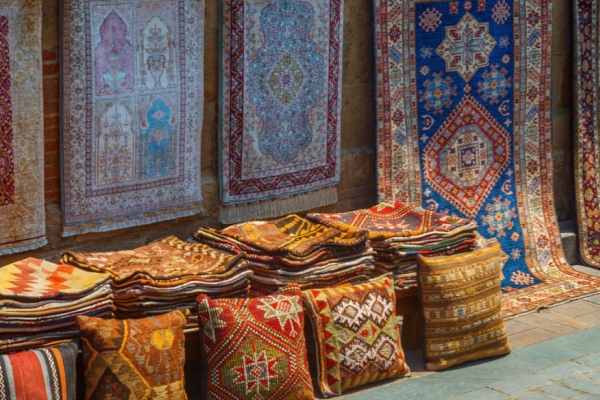
Spices and Dried Fruits: Xinjiang is famous for its agricultural products, including a vast array of spices, nuts, dried fruits, and the famous Xinjiang grapes.
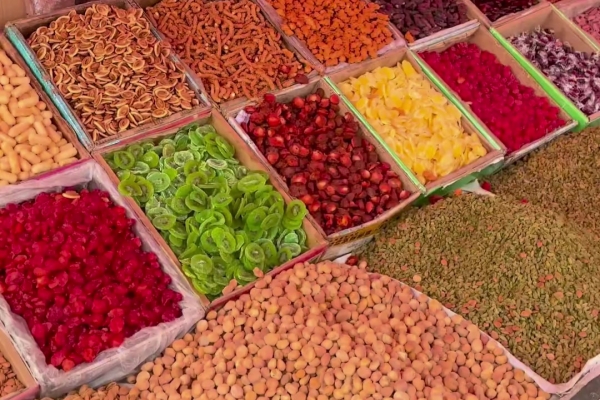
Handmade Jewellery and Embroidery: Many stalls offer stunning Uyghur jewellery and hand-embroidered textiles that are perfect mementoes of your visit.
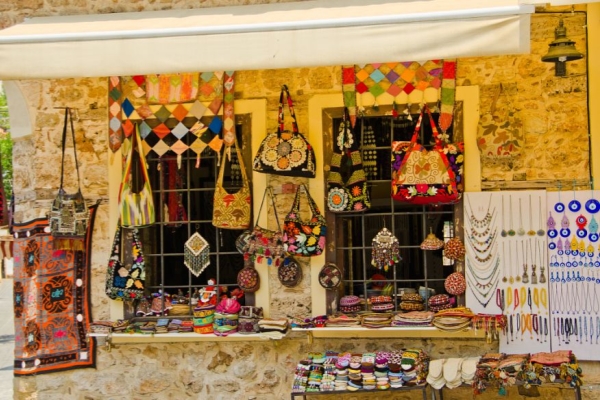
Traditional Musical Instruments: For music lovers, the Bazaar sells traditional Uyghur instruments such as the dutar (a stringed instrument) and the rawap (a type of lute).
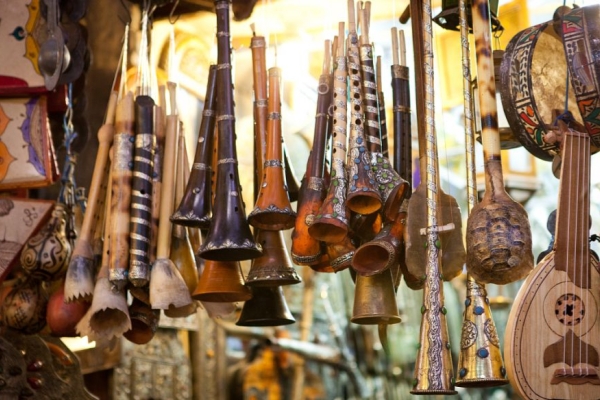
The Bazaar also has a variety of stalls where you can find modern goods like clothing, electronics, and souvenirs tailored to tourists. The diversity of products means that there’s something for every type of shopper.
3. Gastronomic Delights: Uyghur Cuisine
No visit to the Grand Bazaar is complete without sampling the incredible local cuisine. Xinjiang is known for its unique fusion of Chinese, Central Asian, and Islamic culinary traditions. At the Bazaar, you’ll find a wide range of street food and local delicacies, such as:
Lamb Kebabs (Chuanr): One of the most iconic dishes of Xinjiang, these skewered lamb kebabs are grilled to perfection and flavoured with cumin, chili, and garlic.
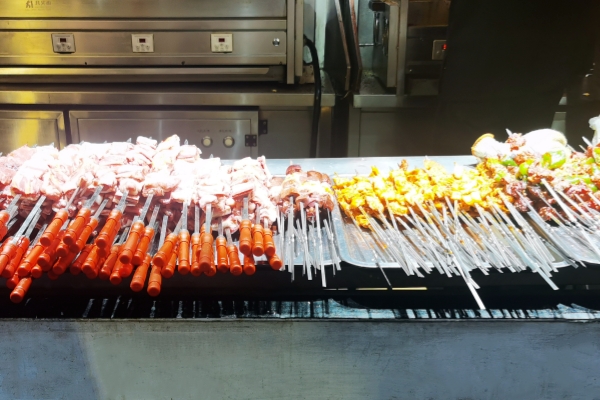
Polo (Pilaf): A hearty dish of rice, lamb, carrots, and raisins, Polo is a staple of Uyghur cuisine and can be found at many food stalls.
Naan Bread: Served with almost every meal, this round, flat bread is cooked in traditional tandoor ovens and is perfect for dipping into various sauces and stews.
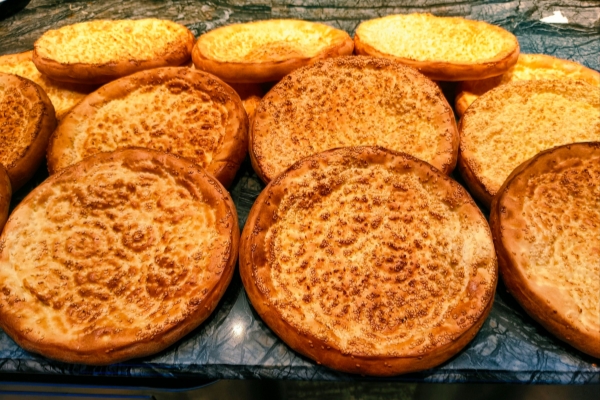
Lagman: Hand-pulled noodles served in a rich broth with vegetables, lamb, and spices. It’s a filling, comforting dish that locals and tourists alike enjoy.
The food stalls within the Grand Bazaar offer a sensory feast, with aromatic spices and sizzling grills filling the air. It’s an excellent place to try authentic Uyghur food and experience the flavours of Xinjiang.
What to Know Before Visiting the Grand Bazaar
1. Opening Hours of Grand Bazaar
The Grand Bazaar is open every day from 10:00 AM to 10:00 PM, but it’s best to visit during the afternoon or early evening when the market is fully alive with people, performances, and food stalls.
2. How to Get from Urumqi to Grand Bazaar?
The Grand Bazaar is located in Urumqi, Xinjiang’s capital city, and is easily accessible by public transport, including buses and taxis. If you’re staying in a central area of Urumqi, it’s only a short drive (15-30 mins) or public transport ride away. Many local tour operators also offer guided tours to the Bazaar, which can provide you with insights into the history and cultural significance of the site.
3. Can I Bargain at Grand Bazaar?
Like many traditional markets, bargaining is common in the Grand Bazaar. Don’t hesitate to negotiate prices, especially for items like souvenirs, textiles, and handicrafts. Vendors expect some haggling, and it can be a fun part of the experience.
4. Safety and Tips
The Grand Bazaar is generally safe for tourists, but it’s always advisable to stay alert in crowded areas. Pickpocketing can occur in busy markets, so keep your belongings secure. Also, while the Bazaar is a popular tourist spot, it’s respectful to learn a few words in Mandarin or Uyghur to enhance your experience and interactions with locals.
A Must-Visit Destination in Xinjiang
The Grand Bazaar of Urumqi is a unique blend of shopping, culture, and history. Whether you’re there to shop for unique souvenirs, sample local foods, or immerse yourself in Uyghur traditions, the Bazaar offers a memorable experience. It continues to stand as a testament to Xinjiang’s rich cultural diversity and its central role in the Silk Road’s history. Make sure to include the Grand Bazaar in your travel plans when visiting Xinjiang, and be prepared for an unforgettable experience that captures the essence of this fascinating region.









